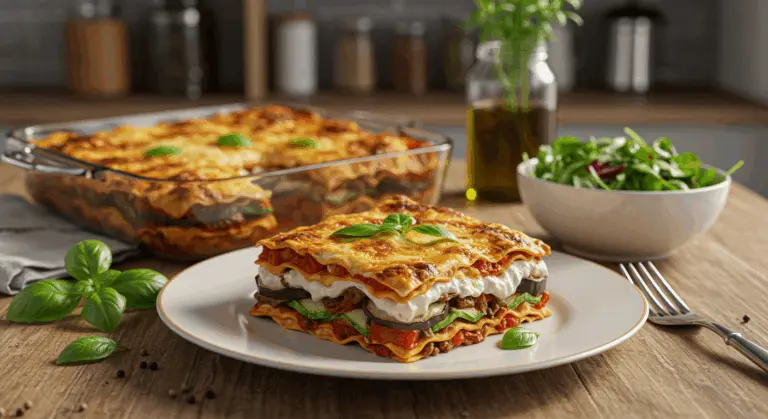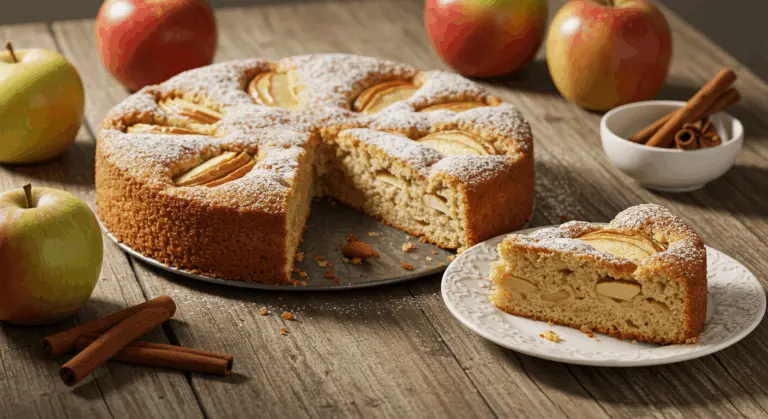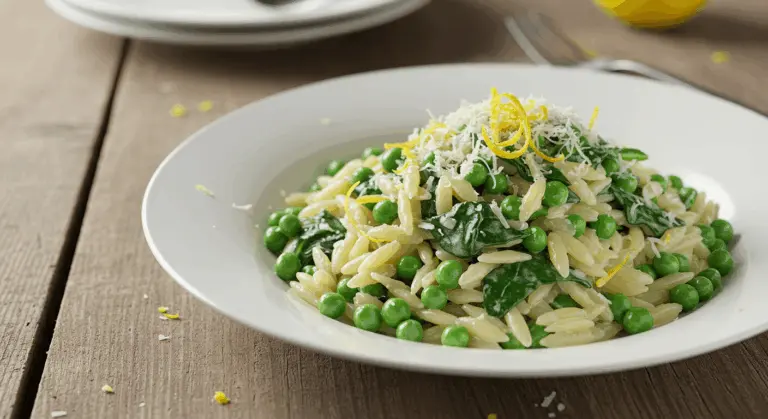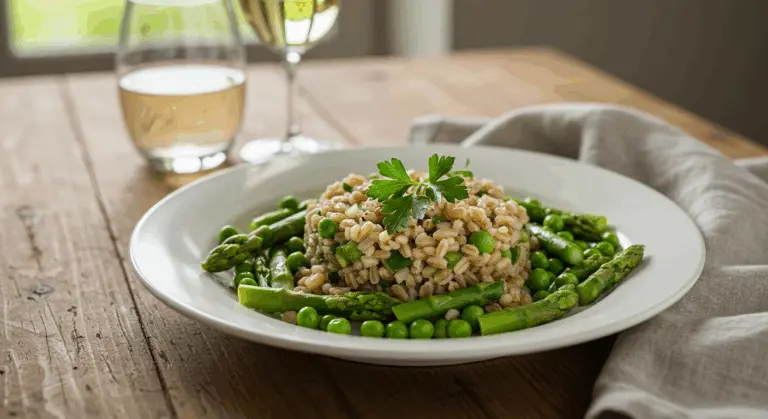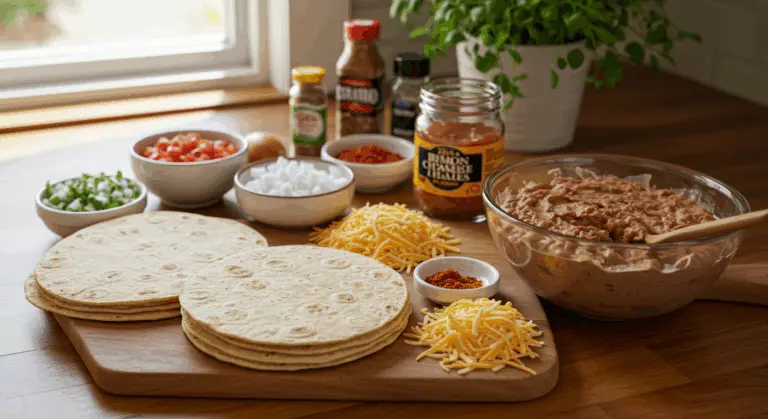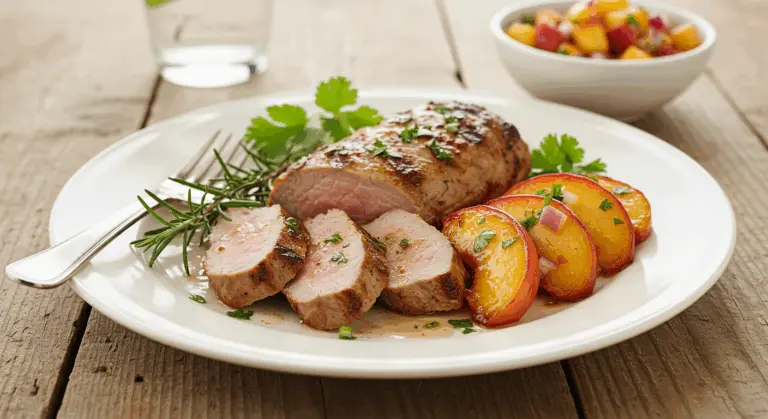How to Host the Perfect Soup Party – Ideas and Tips
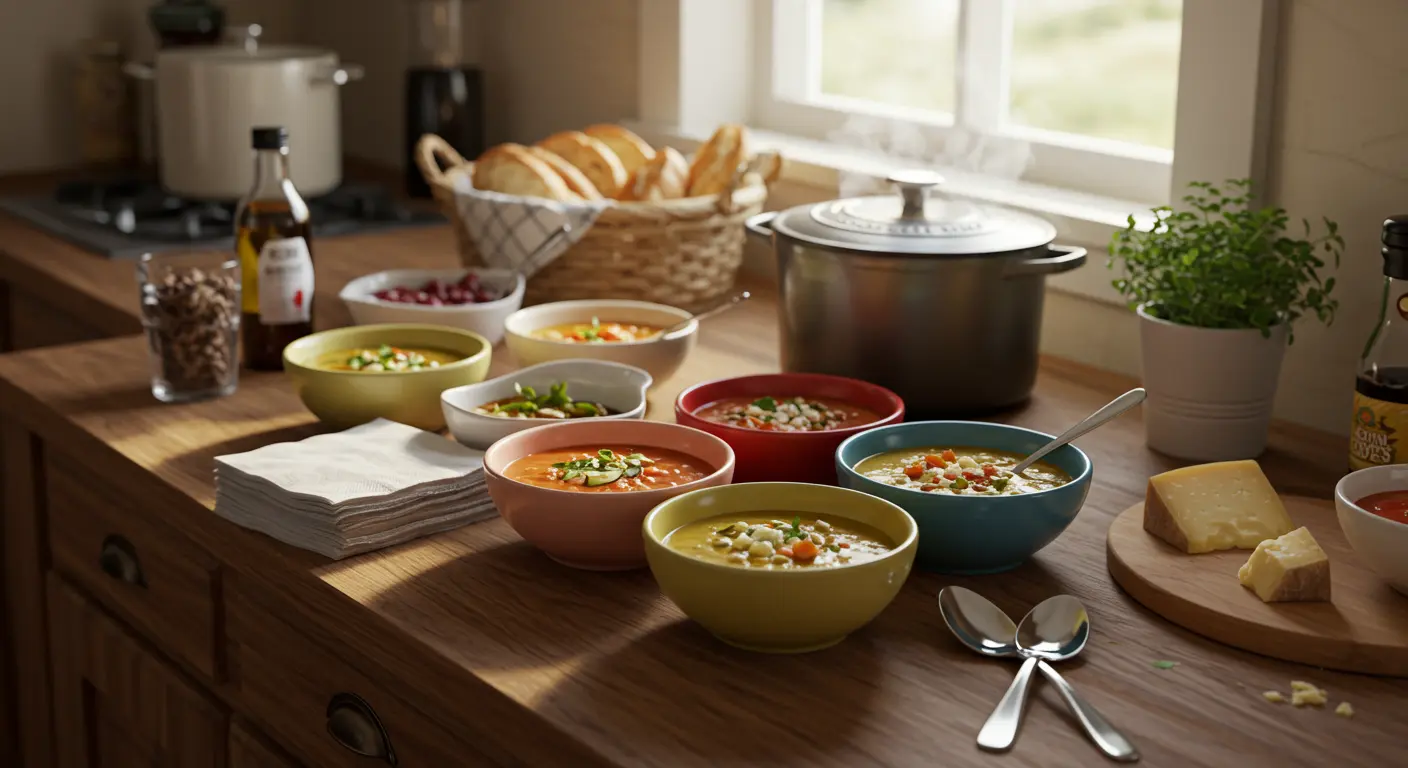
What is a Soup Party? – Understanding the Concept
A soup party is a delightful, casual gathering centered around soup—but it’s far more than just a meal. It creates an experience that brings friends together in a relaxed atmosphere where conversation flows as freely as the broth itself. Think of it as an open house style event where guests can mingle, sample various soups, and savor each other’s company without the rigid formality of a sit-down dinner.
Especially beloved during fall and winter months, a soup party embodies warmth and comfort at its core. Beyond the food, it’s about crafting a cozy, social atmosphere that feels like a warm embrace. The appeal comes from its elegant simplicity: an accessible setup that naturally encourages guests to mingle and chat freely, bowl in hand.
This gathering stands out for its remarkable adaptability, adapting to your space, schedule, and social circle. This flexibility makes it an excellent alternative to the traditional dinner party. Key aspects of its flexibility include:
-
Venue: Host it indoors or outdoors.
-
Timing: Make it an evening affair or a weekend lunch.
-
Scale: Keep it intimate with close friends or expand it to include neighbors and colleagues.
Planning Your Soup Party – Key Considerations
A great soup party starts with thoughtful planning, but don’t let that intimidate you. Start by deciding on the timing—soup parties work wonderfully as weekend lunches or cozy evening gatherings. Consider your guest list carefully; while soup parties can accommodate various numbers, 8–12 guests often strikes the perfect balance for lively conversation and delicious variety without overwhelming your kitchen space.
Focus your planning on the buffet-style setup. Arrange Dutch ovens or pots on low heat (or nestled in slow cookers) to maintain soups at the perfect serving temperature throughout the event. Stack sturdy bowls nearby—disposable options work well for easier cleanup, though if you prefer reusable dishware, ensure you have enough for everyone to sample multiple soups. Position spoons, napkins, and any additional serving utensils within easy reach.
When designing your layout, think strategically about traffic flow. Guests should be able to move comfortably through the serving area to select their soup and toppings. Create ample seating or standing areas where guests can comfortably balance their bowls while they eat and socialize.
Creating a Diverse Soup Menu – Recipe Ideas
An unforgettable soup party needs offering varied flavors and textures that appeal to different palates. Aim to include at least three to four different soups that provide delicious contrast in taste, consistency, and ingredients. A classic tomato soup offers familiar comfort, while a vibrant zucchini soup brings garden-fresh brightness, and a hearty black bean soup adds satisfying substance and earthy depth to your menu.
To ensure variety, consider balancing your selections with these categories:
-
A creamy option: e.g., potato leek or butternut squash.
-
A clear broth-based soup: e.g., chicken noodle or vegetable.
-
A hearty, stew-like option: e.g., beef and barley or lentil.
-
A unique or international soup: e.g., Thai coconut or Mexican tortilla.
Consider making your soup party collaborative by inviting guests to bring their favorite soup to share. This approach not only lightens your cooking load but also introduces personal touches and cherished family recipes to the gathering. When guests contribute, you’ll naturally end up with a diverse spread that sparks animated conversation about recipes and food memories. Just coordinate in advance to avoid duplicate soups and ensure you have enough warming options for all contributions.
Simple Appetizers to Complement Your Soups
While soups take center stage, simple appetizers work best and perfectly complementary. Crusty artisan bread is a must—consider offering a nice variety like baguettes, sourdough, and whole grain, sliced and arranged in rustic baskets.
A simple cheese board is another great option. Offer a few contrasting cheeses, such as aged cheddar, creamy brie, and sharp Parmesan. Sliced apples or pears provide a delightful seasonal addition, offering refreshing crunch that cleanses the palate between soup tastings.
Setting Up Your Soup Party – Buffet Style
The buffet-style setup is key to a successful soup party, creating a self-serve experience that naturally encourages mingling and adventurous sampling. Position your soup station in a central location with generous space for guests to move freely around it. Arrange your Dutch ovens or slow cookers in an appealing row, each equipped with its own ladle resting on a spoon rest or small plate to prevent drips and cross-contamination between flavors.
Use small, clear signs to identify each soup, thoughtfully noting any that are vegetarian, vegan, gluten-free, or contain common allergens. This thoughtful detail helps guests navigate their options with confidence. Opt for smaller bowls rather than large ones—this approach encourages guests to sample multiple varieties without filling up too quickly on a single option. Stack these bowls at the beginning of the buffet line, followed by spoons and napkins for seamless flow.
Add visual interest in varying the heights of serving vessels using cake stands or decorative boxes underneath tablecloths. This technique not only makes the buffet more visually striking but also makes better use of space. Place baskets of bread or mugs brimming with breadsticks strategically along the table as both functional centerpieces and convenient grab-and-go options. Finally, ensure the area is well-lit, so guests can clearly see what they’re serving themselves, and consider placing a discreet trash receptacle nearby for used napkins and spoons if guests will be returning for seconds with fresh dishware.
Enhancing the Experience with Toppings
A well-planned toppings bar takes your soup party to the next level, empowering guests to personalize each bowl according to their unique preferences. Set up a dedicated toppings station adjacent to your soup buffet with an array of small bowls containing carefully selected additions that complement your soup selections beautifully.
Organize your toppings by category for easy navigation. Label each option clearly and provide dedicated small serving spoons to maintain freshness.
-
Fresh Herbs: Chopped parsley, cilantro, chives, and thyme.
-
Dairy & Richness: Shredded cheddar, crumbled feta, grated Parmesan, and sour cream.
-
Crunch & Texture: Croutons, crispy bacon bits, toasted nuts, seeds, and crispy fried onions.
-
Hearty Add-ins: Diced avocado, cooked quinoa, or tortilla strips.
-
Flavor Boosters: Hot sauce varieties, pesto, flavored oils, or a selection of vinegars.
Drinks to Pair with Your Soups – Beverage Suggestions
| Beverage Type | Suggested Pairings |
|——————-|——————————————————————–|
| Red Wine | Pinot Noir (with mushroom/beef soups), Shiraz (with spiced soups) |
| White Wine | Avignon Blanc or unbaked Chardonnay (with cream-based soups) |
| Beer & Ale | Amber ales (versatile), Wheat beers (light soups), Stout (bean soups) |
| Non-Alcoholic | Sparkling water with citrus, hot or cold apple cider, iced tea |
When serving piping hot soups, room-temperature or slightly chilled drinks often provide the most refreshing contrast. To prevent bottlenecks and maintain smooth flow, establish a separate beverage station equipped with appropriate glassware for all your drink options.
After the Party – Managing Leftovers
One of the best parts of hosting a soup party is all the delicious leftovers that can extend the enjoyment for days afterward. Be prepared for this rewarding phase of your gathering by having an assortment of containers on hand—inexpensive plastic tubs or charming mason jars work wonderfully. As the party winds down, offer guests the opportunity to take home samples of their favorite soups. This generous gesture not only reduces waste but also spreads the joy well beyond the event itself.
For the soups remaining in your kitchen, consider these creative repurposing options:
-
Thicker soups: Simmer down to create a pasta sauce.
-
Broth-based soups: Use as a flavorful cooking liquid for rice or quinoa.
-
Any soup: Use as a base for a casserole or a more complex stew by adding new ingredients.
Good storage keeps your leftover soups fresh longer. Portion them into single-serving containers before freezing for convenient future meals—you’ll thank yourself later! Label each container with the soup type and date, and consume within 2–3 months for optimal quality. This approach to managing leftovers not only minimizes food waste but also provides you with homemade convenience meals for busy days ahead. It’s a practical benefit that makes hosting a soup party even more rewarding in the long run.
Tips for a Successful Soup Party – Final Thoughts
A successful soup party is all about creating an atmosphere where comfort and connection flourish naturally. Remember that while the soups are undeniably important, they’re really just ways of bringing people together in a relaxed setting. Focus on fostering a welcoming environment where conversation flows as effortlessly as the ladles dip into the pots. Consider soft background music at a volume that enhances rather than competes with conversation, and arrange seating in intimate clusters that naturally encourage interaction.
Most importantly, enjoy your own party. Prepare as much as possible in advance and design a seamless self-service setup so you can truly relax alongside your guests. When you’re relaxed and having fun, your guests will too—this creates the warm atmosphere that transforms a simple soup party into a cherished tradition.

